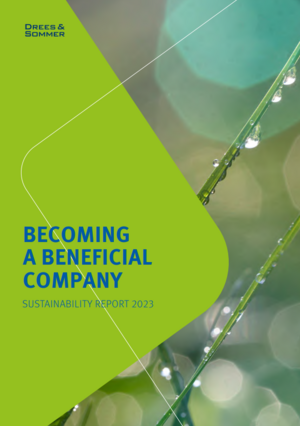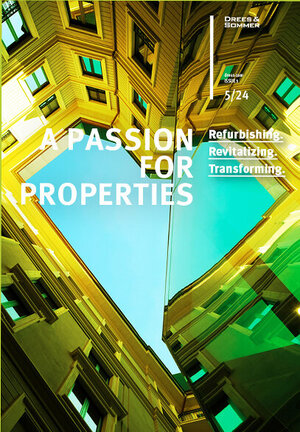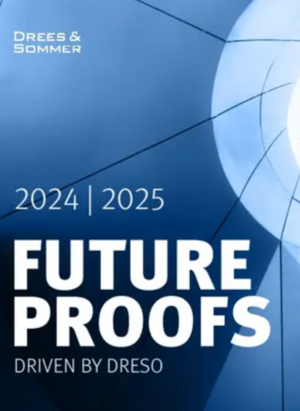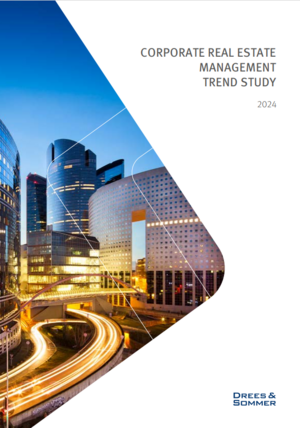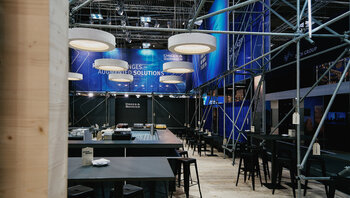Stuttgart, Germany, January 21, 2021. The Federal Ministry of Transport and Digital Infrastructure (BMVI) has commissioned the Stuttgart planning and consulting company Drees & Sommer SE and the Institute of Transportation Research Stuttgart (VWI)to compile a joint report on the urban and transport planning integration of urban cable transport projects. The result should be a guideline for the implementation of cable transport systems as a component of public passenger transport, which is due to be presented in two years.
‘With this study and guideline we want to create incentives to promote sustainable mobility in an urban context and to supplement the public transport system in a sensible way. Our goal is to create a national standard for urban cable transport systems in Germany which towns, cities and local communities can use as a guideline,’ says Steffen Bilger, the Parliamentary Secretary of State in the Federal Ministry of Transport. In spite of the ‘considerable success and demonstrable advantages’ of cable transport systems in many metropolitan cities worldwide, the Ministry's project description adds that in Germany there is ‘not much experience of cable transport systems in an urban context.’
Studying the cable transport systems in the cities of Medellín, La Paz, New York, Portland, Algiers, Lisbon, Brest, Bolzano, London and Ankara is therefore an element of the joint study by Drees & Sommer and the Institute of Transportation Research.
In the analysis of the eight example cities, the study focuses on the designated purpose of the cable transport system, the planning process, integration into the urban context, the links with the wider public transport system and the effects on transport and traffic. The aim is to derive insights for possible cable transport projects in Germany.
‘In the analysis, the large social and political differences of some cities in comparison with Germany must also be taken into account,’ comments Sebastian Beck, an infrastructure expert at Drees & Sommer and the project manager of the study. He is convinced that ‘cable transport systems as a supplement to the existing public transport system will be an essential option in the future, especially because the traffic systems in cities and major population centers will come under increasing strain.’
A Mode of Transport with an Unbeatable Cost-to-Benefit Ratio
His colleague Stefan Tritschler from the Institute of Transportation Research, the deputy project manager of the study, agrees: ‘Traffic congestion, air pollution, traffic noise, excess use of land and traffic accidents force us to reduce the existing traffic burden. Cable transport systems use overhead space and are largely independent from other modes of transport, they are technically sophisticated and hardly produce any local pollutant emissions. Above all, they are quieter, safe, efficient and can be implemented in a relatively short time.’
Very Little Practical Experience with Urban Cable Suspension Transport Systems in Germany
Apart from the suspended cable cars in the mountains, the only cable car systems in German cities are in Berlin, Koblenz and Cologne, where they were constructed for the German Garden Exhibition. However, there are numerous discussions and projects in various stages of development for the construction of cable transport systems to supplement the existing public transport infrastructure, for example in Berlin, Bonn, Dusseldorf, Cologne, Munich, Stuttgart and Wuppertal. ‘Urban cable suspension transport systems are a relatively new transport mode for the transport companies and political decision-makers, and they need different and sometimes more stringent requirements in planning, communication and implementation than other more conventional modes of transport,’ says the Drees & Sommer expert Sebastian Beck.
Stefan Tritschler adds that this applies, for example, to the subject of overhead movement rights. He says that the fact that cable transport systems sometimes need to pass over residential buildings often meets with resistance from the residents.
‘The not-in-my-backyard syndrome, which is often abbreviated to NIMBY, affects almost all transport and infrastructure projects and also applies to suspension cable transport projects. Many people are convinced of the advantages of an urban cable transport system, but nobody wants it to pass by their home, especially not their bedroom or living room windows.’
Koblenz: Hands off Our Cable Car
Experience shows that once a cable car has become a part of local transit, public acceptance increases rapidly. The German city of Koblenz is one example of how popular an urban cable car can be. Built for the 2011 National Garden Show, the city’s cable car was supposed to be dismantled shortly thereafter. But a Koblenz citizen initiative dedicated itself to its preservation. Drees & Sommer advised the builder during the competition and selection process.
For Sebastian Beck, citizen support is the key criterion for success: ‘Although it was a highly contentious undertaking, the people want to keep their cable car now it has been built,’ he emphasizes. A transparent process is key to ensuring that the cable car does not fall to the opposition of the affected citizens. ‘If cable cars are to be a part of the local transit picture in Germany too, involving citizens right from the start is vital. People’s concerns can only be addressed and alleviated by seeking dialog and proactively communicating,’ summarizes the expert.
The joint working group of Drees & Sommer and the Institute of Transportation Research (VWI) will carry out workshops in several German cities as part of its work to compile the guideline. Because of the Covid-19 pandemic, they will probably be carried out digitally during the coming year. Sebastian Beck does not yet reveal which cities they will involve. ‘We are still at the beginning, and we will contact the selected cities in the coming weeks,’ the expert explains.
About Drees & Sommer SE
Drees & Sommer SE was established in 1970 in the German city of Stuttgart with a handful of employees. It now has a staff of around 4,000 people at 46 locations worldwide. In 2019, the company generated sales of 500 million euros. Its architects, engineers, business administrators, designers, chemists, ecologists and other experts are currently working on more than 4,250 projects for private and public clients. The company has extensive experience in public approval proceedings.
About VWI
The Institute of Transportation Research in Stuttgart has been active for over 90 years in consultation, research and practical implementation in all areas of public transport.
The special focus of the Institute's work is on passenger transport. Because of its sponsoring body, the Institute of Transportation Research at the University of Stuttgart, there are close academic and expertise links between the institute and the university. The continuous collaboration aims to combine basic research and applied research, including practical implementation.
For further information, please visit www.dreso.com and www.vwi-stuttgart.de.
Your contact at Drees & Sommer:
Barbara Wiesneth, Head of Media and Public Relations,
Mobile: +49 (0)172 799 57 52
Your contact at VWI:
Stefan Tritschler, Managing Partner
Phone: +49 (0)711 894602 12


